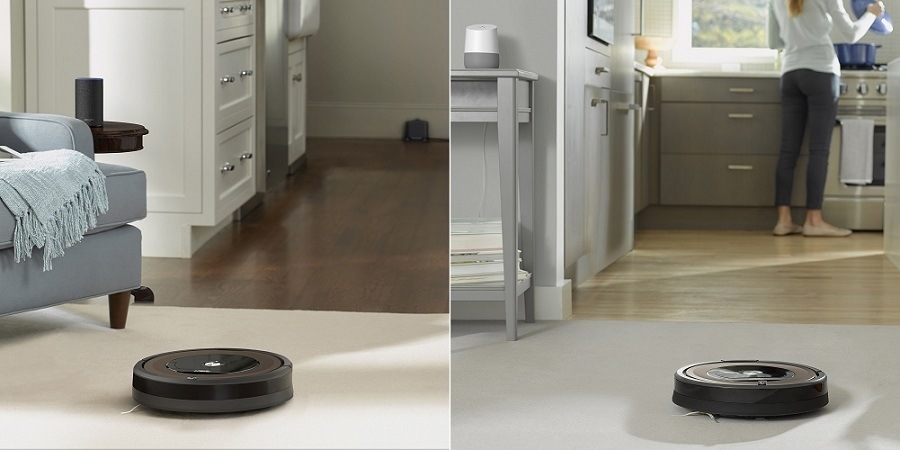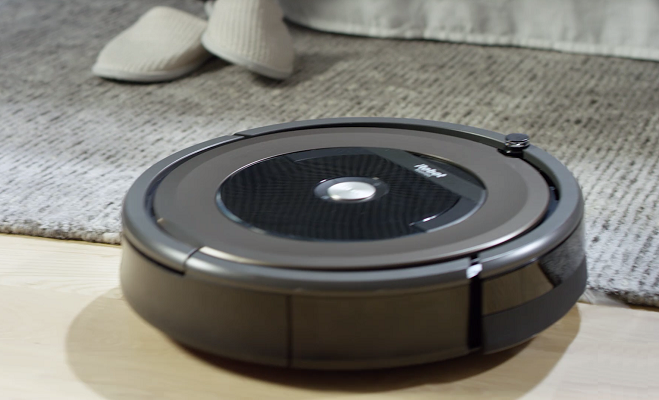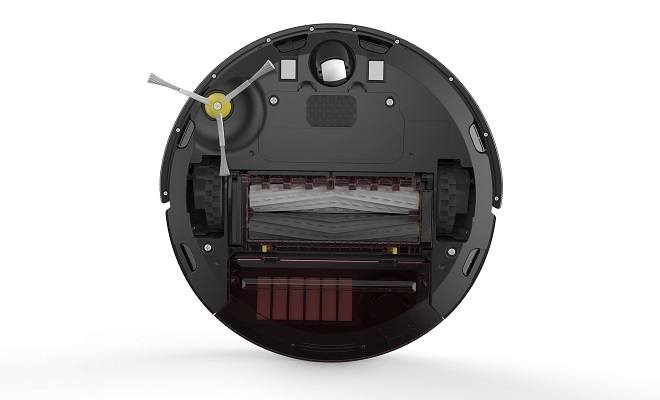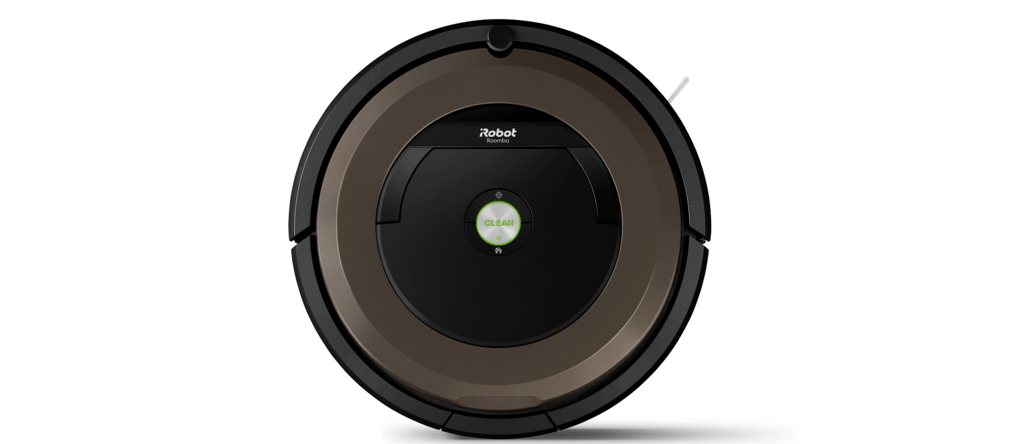Not a single robotic vacuum that has been released to the public has been perfect. If there were, there would be no point in writing these reviews. If you have followed my reviews for a while, you know that I like to find out the little nuances that make each model a fit for specific homes.
The Roomba 890 is the top of the 800 series line and the improvements over the other 800 models is evident. In the quest to create the perfect vacuum, companies continuously change technologies back and forth to come up with different combinations. This review looks at the ups and downs the 890 takes trying to become the best of the best.
Contents
Who the Roomba 890 is For
If you are looking for a complete robotic vacuum, the 890 might be a good choice. The vacuum is a great fit for those that:
- Need more control, even while away from home.
- Want a robot vacuum that covers all floor types.
- Looking for a robotic vacuum that cuts down on in-home allergens.
Who the Roomba 890 is Not For
Until the perfect model is developed, not every vacuum will fit every home. You may find that the Roomba 890 is not right for you if:
- You need a long-lasting robot to cover a huge floor plan.
- You have high pile or shag carpeting or rugs.
- The maintenance routine needs to be less frequent.
Dimensions, Features and Options
The features of the Roomba 890 are held to pretty high standards. How do they hold up under scrutiny? I will take a look at some of the more prominent details here to give you a better idea of what to expect when you get the robot home.
More Controls Than The Roomba 860, Which Is A Good Thing
One of the downfalls to the great promise of the Roomba 860 was the lack of any form of control. There were local controls, but that was all. No remote control, no mobile app and certainly not any voice commands.
However, with the Roomba 890, that all changed. You lose most of the local controls that the 860 had, though. Instead of the illuminated faceplate and four action buttons, the 890 has a single clean button with a dual button outer ring.
The upper half of the ring initiates spot cleaning mode. In this mode, the robot will spiral in an ever-growing circle around the starting area. The spiral equals about three feet in diameter from the center and takes about two minutes to run.
The bottom half of the ring is the home button. Pressing this button will, as you can probably guess, send the robot home. You will have to stop the cleaning cycle if is it in progress by pressing the center “clean” button before sending the robot back to the charging station.
The center button is the only other form of local control on the 890. Pressing the button once will wake up the robot and the second press will send it out to do a cleaning cycle.
The Roomba 890 also has wireless communications, which means it will connect to your home wireless network. By doing so, you can use the iRobot mobile app. The app may be the best in the industry, with its easy setup and intuitive menus.
With the mobile app, you can set the same spot mode and automatic mode cleaning cycles as you can with the local buttons on the machine. You can also send the robot back to the charging station the same way you can on the robot itself.
You can do so much more, though. You can give a nickname to your Roomba 890 which will come into play later. You can also create a schedule to allow your robot to run whenever is best for you.
You don’t even need to be home. You can access the mobile app from anywhere and the app will alert your robot back at home of the schedule changes. You can start, stop, pause, resume or cancel scheduled cleanings all from within the app.
You will also get notifications in the mobile app about the status of your robot and the battery level. Further, there are maintenance screens that display when it is time to change your filters and brushes.
The nickname you give your robot through the mobile app will come in to play if you have an Amazon Alexa or Google Home device.

The nickname will be used to give voice commands through the enabled device to the robot. The voice commands aren’t expansive, but they get the job done. You can start a cleaning cycle, pause, resume or send the robot back to the charging dock.
When it all boils down, the mobile app will be the most robust and easiest to use method of control, however, unlike the Roomba 860, you have options.
While not every aspect of the 890 is from the future, a lot of the components I will cover here are from the 900 series line. The navigation and sensors, however, are still from the first generation iAdapt technology.
The sensors are responsible for the navigation. The drop sensors that surround the bottom of the robot keep it from falling off ledges and tumbling down stairs. When the robot approaches a ledge or drop off higher than an inch and a half, the sensors will alert the programming chip and the robot will stop and change direction.
The bump sensors are infrared and acoustic. The acoustic sensors check for walls, furniture, or large obstacles. When detected, the robot will slow down as it approaches. The infrared sensors tell the robot how close and if the obstacle is passable (such as curtains or bedding).
The drop and infrared bump sensors do have a downfall. Dark flooring and dark colored furniture can absorb the infrared beams. This will tell the machine that there is a ledge (for flooring) or that the area is clear of obstacles.
In the event of flooring absorption, the robot may avoid those darker areas of your floors. The acoustic sensors help the robot avoid hard, heavy collisions, but there still may be bumps on darker furniture or chair and table legs.
Don’t blame Roomba, blame the infrared sensors. This absorption is common in all robotic cleaners.
The third set of sensors are the dirt detection sensors. These alert the robot that the area being cleaned still has dirt, dust or debris in the area. When the sensors go off the robot returns to the area to reclean until the sensors report that nothing is remaining.
The Roomba 890 doesn’t have camera or laser navigation. Instead, it has a memory bank that stores sensor alerts. These stored alerts serve as a sort of map technology. There isn’t a physically drawn map. However, the sensor memory builds a one-dimensional map in the computer chips.
The robot will begin to avoid the obstacles and objects that the sensors continuously detect. While there isn’t a map in the normal sense, the robot will soon appear to learn the layout of your home as long as the constant obstacles aren’t moved.
The Extraction Bars Go Through A Big Change And The Filter Is Still One Of The Best
One of the improvements that the 890 brought back from the 900 series (along with the 860 and 880) is the use of brushless extractor bars.
These bars are rubberized rollers that have extruding rubber feet instead of bristles. The rubber feet act as carpet agitators as well as hard floor sweepers. This makes the robot great at cleaning both hard flooring as well as carpet.

In fact, the Roomba 890 is rated for all floor types, although that may be a tad misleading. You see, when we rate vacuums for all floor types, it doesn’t mean just hard flooring and carpet. It means all hard flooring. Tile, vinyl, laminate, hardwood, softwood, marble, granite, pebble, natural stone, slate, etc.
When it comes to hard flooring, the Roomba 890 will clean them all. The tangle-free extractor bars will not scratch hard flooring surfaces. They won’t mar sealants that you find on natural stone and rock floorings. They won’t scuff softwood floors like cedar, pine or fir.
As it pertains to carpet, though, a rating of “all” means that it will clean all types of carpet. This isn’t just about wall to wall, oriental rugs and throw rugs; it also refers to the pile height. Low pile, medium pile, high pile and shag (both short shag and long shag) must be cleaned the same for the “all” rating.
I have yet to see a single robot that can clean all carpet types. The 890 is no different. Most robot vacuums on the market use bristle brush rolls. They are either soft bristle, which makes them great for hard floors but not very effective on carpet above a low pile. Or, they have stiff bristles to agitate and clean medium or even high pile carpeting but can scratch hard flooring.
Some robots even have interchangeable rolls to help their floor type rating. Who has time to stop mid cleaning cycle to change out a brush roll? I know that isn’t something I want to do. I don’t have robot cleaners, so I have to do more work.

The 890 uses the dual brushless extractor bars to work on all floor types. With the exception of high pile and shag carpeting, it cleans all floor types. If you have high pile or shag carpeting, the Roomba 890 will still try to clean them, however, it will get stuck. The carpet fibers are too long and get wrapped around the rollers.
The good news is that the rollers are tangle-free. What this means is that the robot will sense if the extractors have become tangled on a cord, wire, a sock that’s too big to make it to the collection bin, or long carpet fibers.
The robot will reverse the extractor bars in an attempt to free itself. If successful, it will maneuver around the cord or wire and continue on. When the tangle is from high pile carpet though, there is nowhere for the robot to go, and it gets stuck.
If it is stuck, or cannot free itself, it will shut down to save battery life and prevent damage. The 890 will beep at you to let you know that it needs help. You will have to manually free the obstruction before sending it back on its cleaning cycle.
These extractor bars are one of the biggest improvements in robotic vacuums and they work well. So does the filter system.
The AeroForce airflow system is a three-stage cleaning system that sweeps, vacuums and collects all the debris from your flooring. The filter is a big part of this system. When Roomba first started out they had the AeroVac system with a standard paper filter. It wasn’t HEPA certified and those with allergies started to complain.
Since then, iRobot started getting their filters certified and added the HEPA label to their boxes. Then, when the 800 series came out, that all stopped. iRobot isn’t the only one to stop getting the HEPA certification, but they were one of the first.
The HEPA certification means that the filter has been tested and will capture particles down to 3 microns in size. These small particles are known to trigger allergies and include allergens such as pollens, dust mites and pet dander.
The filters used in the AeroForce system are not HEPA certified. The new label claims them as “high-efficiency” filters. The trick here, though, is that the filters are the exact same as the ones that used to be HEPA certified.
While I don’t know (nor care to get into) why vacuum manufacturers are refusing to get the HEPA certification, I do know that HEPA and high-efficiency are the same things (one just hasn’t been independently lab tested.).
If you suffer allergies, the high-efficiency filter will produce the same allergen-free air after it passes through the filter that the HEPA filters do. You are still covered unless you need to see the HEPA label on your product box.
The Containment Hasn’t Changed And It Still One Of The Best
Roomba containment comes in two forms: virtual wall barriers and virtual lighthouses and both will work with the Roomba 890. The 890 comes with a virtual wall barrier, and you can purchase more. The barriers have two modes: linear and halo.
[easyazon_image align=”center” height=”333″ identifier=”B06XS31V18″ locale=”US” src=”https://smartrobotichome.com/wp-content/uploads/2018/10/41NEmocIWOL-1.jpg” tag=”srh-easyazon-20″ width=”500″]In linear mode, the barrier sends out an infrared beam up to 10 feet. You can use this little battery operated tower to block off doorways, hallways, entrances or certain areas of a room.
The robot will detect the beam and treat it like a physical barrier such as a wall. The robot will not pass the beam and anything on the other side is protected from being vacuumed.
When in halo mode the infrared beam becomes a four foot diameter circle around the barrier tower. This mode is useful for protecting things you may have on the floor that you don’t want to be vacuumed over or potentially run into.
Pet food bowls are common. So are fragile floor lamps or vases. I’ve even seen people use them to protect a floor puzzle or board game in progress. It really depends on what you need the device to block off and the uses are near limitless.
Specifications Chart
Let’s take a look at all the things the Roomba 890 has or is lacking, to better understand what it can offer you.
| Roomba 890 | |
| Dimensions | 13.9×13.9×3.6 inches |
| Weight | 8.4 pounds |
| Battery | 1800mAh Lithium-ion |
| Automatic Recharge | Yes |
| Automatic Resume | No |
| Runtime | Up to 60 minutes |
| Recharge Time | 3 hours |
| Filter | AeroForce high-efficiency |
| Collection Bin Capacity | 0.3L |
| Wireless Communications | Yes |
| Bluetooth | No |
| Remote Control | No |
| Mobile App | Yes |
| Voice Commands | Yes |
| Local Controls | Yes |
| Navigation | iAdapt Navigation Technology |
| Mapping | Sensor Based |
| Drop Sensors | Yes |
| Bump Sensors | Yes |
| Dirt Detection Sensors | Yes |
| Containment | Virtual Wall Barrier |
| Scheduling | Yes |
| Full Bin Indicator | No |
| Side Brushes | 1 |
| Floor Types | All |
| Warranty | 1 year |
Alternative Options
When it comes to robotic floor cleaners, you have plenty of choices. If you think the Roomba 890 may not be the right model for you, or want others to compare it to, here are a few worthy of consideration.
Roomba 980
The Roomba 980 is the upper tiered version of the 890. It has the latest navigation technology (iAdapt 2.0) which is camera guided. Complete with the full range of acoustic and infrared sensors and high-efficiency filters.
Some users complain that the 980 lacks in suction power, even though it comes with carpet boost that increases suction and power when the robot is on carpeting. It comes with a hefty price tag, but for those that like the Roomba line up, the 980 is the best of the best and worth the cost.
ILIFE V7S Pro
Assuming you want a little more out of your robot, the ILIFE V7 series will vacuum as well as a mop. Having a combination robot is something worth looking into if you have a lot of hard flooring that needs to be maintained. It uses sensor-based technology to maneuver but doesn’t have a form of containment.
You will have limited controls, and (as of this writing) a Chinese only mobile app, but that doesn’t keep the V7S Pro from being one of the most sold units of all robotic vacuums. It does have limitations on carpet, using soft bristle brush rolls, yet it is arguably one of the best ILIFE combination robots made.
Roomba 690
If you want to save money and stick with the trusted Roomba name, the 690 might be worth looking at. It has all the same controls as the 890, including the use of the mobile app and voice commands. It also uses the same iAdapt technology for sensor-based navigation.
It doesn’t use AeroForce technology, though, using the AeroVac system instead. So you will lose out on the high-efficiency filters. If you have allergies, you may want to skip this one. Otherwise, the only main differences are the brush rolls. The 690 uses bristle brushes instead of the tangle-free extractors, but it still cleans carpet and hard flooring well.
Frequently Asked Questions
I will answer some of the most commonly asked questions now to give you a full rundown of all the concerns. If you still have questions, please feel free to use the comments section below.
Q. Did the battery get an improvement with the other upgrades?
A. No. It didn’t and I am quite upset about that. I was willing to give iRobot the benefit of the doubt when the released the 860. The smaller vacuum doesn’t have wireless controls and relies less on programming and other battery draining features.
With the 860, the 1800mAh battery is enough to get the job done. However, with the 890, there are more things going on under the hood, so to speak, that require more battery power. This is why the 890 has a runtime of up to one hour and a recharge time of three.
I would prefer to see a 2600mAh battery pack, at least. There really isn’t a need for a 3300mAh, but even the larger 2600 would almost triple the runtime and have the same recharge rate. I understand they are trying to save production costs and lower the price tag, but some things are worth paying a tad bit more.
Q. Is maintenance easy? I can’t bend over for very long or use my fingers too well (arthritis).
A. Maintenance is fairly simple, to be honest. You will have to use your fingers some, but not like you will with your upright machine.
The collection bin pops out with the press of a button and is easily emptied, wiped out and returned. This should be done after every use for a while and may be extended to every other cleaning cycle if you notice it isn’t filling as rapidly.
The sensors all need to be wiped clean on a regular basis, but that only takes a minute. The hardest part will be the extraction bars.
Even though they are tangle-free, strings, hairs and other debris will still wrap around. It’s just part of the business. You can’t have moving parts without getting things wrapped around them. The extractors pop out relatively easily, even for those with arthritic hands. The bars can be wiped off, instead of having to use scissors to free the tangles, and replaced just as easy.
While the extractors are off, you should go ahead and clean out the collection duct in case hair and debris have collected in there.
The entire process should only take about ten minutes and can be done sitting in your favorite chair with the robot in your lap or on a table.
Q. How many square feet of floor space can the Roomba 890 cover in a single charge?
A. That depends a lot on the type of flooring you have. If it is all hardwood and maintained regularly, you can get up to about 1600 square feet out of a single charge. Some reports claim even more.
However, if you have carpeting or a lot of high traffic areas, pet hair, etc., it will take longer and cover less. Under normal conditions, with the battery lasting on average about 50 minutes, you can expect coverage of about 1000 to 1400 square feet. This, assuming you have hard flooring and carpet throughout the home.
Q. Can I use the robot upstairs and downstairs or do I need to buy multiple units?
A. The Roomba 890 comes with a collapsible handle. It rests in the faceplate and makes carrying the robot up and down stairs easier.
You don’t need to move the charging station, though. In fact, it is advised that you don’t. Moving the charging station can confuse the robot and it may take longer to dock, or not dock at all.
Instead, you should move the robot upstairs (or down) manually and then return it to the docking station when the cleaning cycle is complete. There isn’t a need to purchase multiple units unless you just want to.
Q. Can I purchase a second charging station to keep on a different level of the home?
A. No. I mean, technically, you can, but the robot won’t use it, so you will just be wasting your money. As I stated in the question above, moving the charging station will cause the robot to have more difficulty finding the dock and recharging.
Most often this will result in the robot failing to dock and running out of battery before it can recharge. Then you get to play “where is my Roomba?” when you come home, which is less fun than playing it with your kids.
In Conclusion
The Roomba 890 is a versatile robot that handles all hard flooring types without scratches or marring the surfaces. It also handles most carpeting. High pile and shag carpeting will cause the robot to get tangled and shut down; however, all other carpet types get a decent clean.
While no robotic vacuum can replace the power and clean of a corded upright, the Roomba 890 does a great job of in between maintenance. Your floors will remain clean and less likely to show heavily soiled areas.
The controls are intuitive and come from a variety of sources. Aside from the local controls, you will have the ability to use the industry-leading mobile app or voice commands if synced to an Amazon Alexa of Google Home device.
The Roomba 890 could be the penultimate robot cleaner if it had a larger battery and bigger dust collection bin size, but alas, we can’t have it all.
In a Nutshell
The Roomba 890 is close to being the best on the market in terms of abilities, cleanliness and ease of use. The small battery and collection bin limit the robot somewhat, though, but can be easily overlooked.
What I Like
- Tangle-free brushless extractors clean all floor types without damage.
- Uses the industry leading mobile app for complete control.
- Virtual wall barriers are the top of the line for robotic containment.
What I Don’t Like
- The small battery limits the abilities of the robot.
- Entire level cleaning could be included to ensure a thorough cleaning cycle.

I have lost my charging dock for my room a 890 I was wondering if I could use a 800 series charging dock
Hi Cathy,
Yes, the charging docks between the same series should be interchangeable.